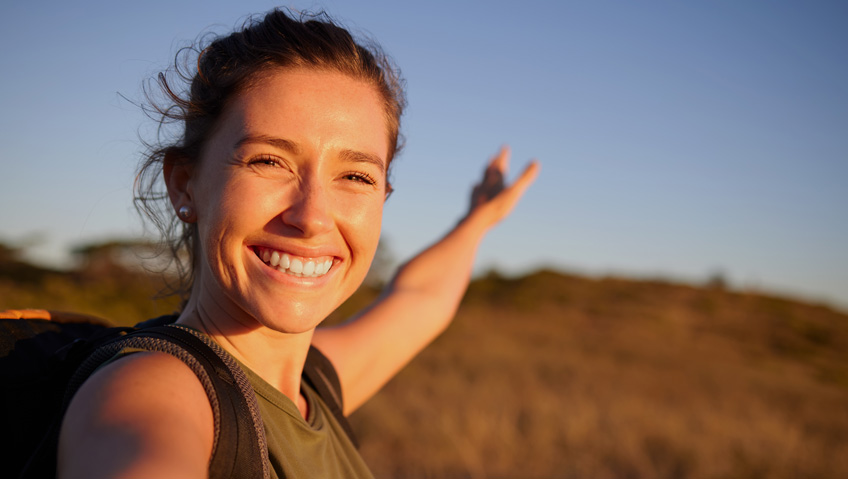The Red Deer Regional Airport, just 10 minutes south of the City of Red Deer, Alberta (population 110,000), is ideally placed; located centrally in the economic corridor between Alberta’s major centres of Calgary and Edmonton, its market is three million people within a 90-minute drive.
With its important historical background and an exciting future ahead of it, the airport is unique in the aviation world—and unique is something it has been, in one way or another, since it was built in 1939.
To learn more about the airport, we spoke with Graham Ingham, CEO of the Airport Authority, and Nancy Paish, the airport’s Director of Business Development and Communications, who also chairs the Board of Directors of Tourism Red Deer, a marketing agency with close ties to the Tourism Industry Association of Canada (TIAC) and TIAC Alberta.
World War II role
In the darkest days of the Second World War, the airport, then known as Number 36 Service Flight Training School, was an invaluable secure resource for Allied forces, where RAF and RCAF fighter pilots trained as part of the British Commonwealth Air Training Plan (BCATP).
It closed at the end of the war but re-opened in 1950 as Number 4 Flying Training School as part of NATO’s training operations during the Cold War. Eventually, it became Canadian Forces Base (CFB) Penhold, which closed in 1995.
In 2004, the 10-acre base site was renamed Mynarski Park in honour of Victoria Cross recipient Andrew Mynarski, and managed by the Harvard Historical Aviation Society, which has collected and preserved artefacts related to the former training schools and army base, including a Tiger Moth and an Airspeed Oxford airplane, which are being restored.
Strategic planning takes off
The closure of CFB Penhold in 1995 by no means spelled the end for the noble little airport that had performed such an important role so long ago. On September 1, 1999, the newly created Red Deer Regional Airport Authority (YQF) assumed ownership of the airport from the Province of Alberta, with the City of Red Deer and Red Deer County as key stakeholders, and began operating it as a not-for-profit organization.
In 2019, after 20 years of operation, and sensing new opportunities, Ingham and the Board of Directors got together to develop a strategy to become “the aviation gateway and key economic driver for central Alberta,” while continuing to contribute to the community. That may seem overly ambitious considering that Red Deer is sandwiched between the Calgary and Edmonton airports, which Ingham describes as “two behemoths,” but he goes on to explain how the situation presents both challenges and opportunities: “Their operating costs are significantly higher than ours, they are not as nimble as we are, and they have other problems associated with operating a big airport,” he says. “I think that we are the only airport in Canada that has actually lowered its landing fees, the likes of which were decreased by five percent this year.
This satisfying situation is due in part to Red Deer’s lower operating costs, but mainly to excellent financial management. For example, reporting to the AGM in 2022, Ingham noted that despite the lingering hangover of COVID-19, the airport was able to maintain revenue and decrease expenses, finishing the year with an $85,000 surplus.
“We have a strict no-debt policy at the airport, something we’re very proud of and important to our strategy because you can’t operate a low-cost airport if you are carrying a mountain of debt,” Ingham shares. “We have a unique strategy and value proposition as a self-proclaimed low-cost airport that will resonate with many aviation and aviation related businesses such as low-cost carriers, who need this type of support in order to thrive. “The low-cost airport strategy is unique to Canada, and we’re very optimistic about our long-term future by adopting this strategy.”
Ingham indicates that if the strategic plan called for the airport to be bigger just for the sake of being bigger, or to try to take business from Calgary and Edmonton, that wouldn’t work. Instead, the plan calls for Red Deer to develop differently, to capitalize on the strengths it has that large urban centres don’t have, such as the availability of runway-adjacent land which, once fully developed, will generate hundreds of jobs and millions of dollars in revenue, and that’s what we’re excited about.”
Three phases, one strategy
Even though technically speaking, the Red Deer Regional Airport is currently going through a three-phase expansion plan, it’s really a strategic development plan that will allow the airport to reach its potential.
In 2022, the airport received grants totalling $15 million (from the Province of Alberta, County of Red Deer, and City of Red Deer) to widen the main runway from 30 meters to 45 meters, strengthening the main taxiway and apron, thereby making it wide enough for larger aircraft such as 737s from low-cost airlines, cargo and charter operators.
Phase One—widening the main runway—was completed this past July, and work is beginning on Phase Two, which involves expanding the terminal building by 10,000 square feet to accommodate 189 domestic and international passengers at one time.
Now, with $37.5 million in funding from the Province of Alberta, the airport authority is looking to begin Phase Three in 2024, which will expand Airport Drive south of the airport all the way to the north of the airport. When completed in 2026 it will provide the airport with the ability to attract and support many new aviation and aviation-related businesses such as cargo, aircraft manufacturing and heavy aircraft maintenance repair and overhaul. With over 800,000 square metres available, the sky’s the limit.
Centre of aerospace business
“There is tremendous support for business in general from the province, and especially for the aviation and aerospace sector, which they’re interested in growing,” Ingham tells us. “We have an extremely low corporate tax rate in Alberta and a lot of opportunities for support, particularly here in the Red Deer region. We have land that’s not readily available anywhere else in Canada because most of the land around airports has been fully developed. When we set a goal to make Red Deer a centre for aviation business, we came up with something unique.”
Currently, the Red Deer Regional Airport site is home to over 20 aviation-related businesses, including one flight school and two aerial firefighting businesses, which together employ over 250 people. Now, with the widened runway, larger terminal building, and runway-adjacent land available for development, many more aerospace businesses—manufacturing, avionics, maintenance and repair, cargo, charter services, and ULCC (Ultra Low-Cost Carriers) for passengers—will have the opportunity to buy or lease airside land for as little as two dollars per square meter.
Because Red Deer is a low-cost airport, this comes with competitive aviation service rates, no business tax, and safe, secure, and efficient service.
Major event destination
Meanwhile, when Paish is not working to attract new business, she’s thinking about the role the airport can play in making the City of Red Deer and the surrounding county into an event destination, something that goes hand-in-hand with having an airport close by, which she says will have a significant tourism impact and increase its potential as an economic driver.
“We’re looking at attracting cultural and sporting events, both national and international, because we have the infrastructure from 2019 when we hosted the Canada Winter Games,” she says. “We have the ski hill, the arena, and some lovely facilities to host conferences, exhibitions, and concerts. We’ve had rodeos, agricultural exhibitions, and ‘farm to fork’ experiences. For the last three years, we’ve hosted the International Powwow.”
This three-day event, scheduled for October 13-15, 2023, regularly attracts more than 7,000 people and highlights Indigenous traditional music, dance, storytelling, and educational events, as well as showcasing First Nations’ businesses and entrepreneurial spirit.
She goes on to say that while Red Deer doesn’t have the same capacity for huge events as Calgary and Edmonton, it can still serve as a secondary event centre for them and provide cargo services or facilities for practice, since they are only 90 minutes away.
When we spoke again on June 1, Paish was excited to be going on a trade mission through the Government of Alberta to the International Air Show in Paris. This is the world’s largest event dedicated to the aviation and aerospace industry and includes trade delegations from seven other countries and with representatives from over 2,500 aviation-related businesses.
“I’ll be connecting with as many of them as I can, to promote the expansion project and invite them to Red Deer,” Paish says, “so they can see for themselves the wonderful opportunities for business development that we have to offer.”






